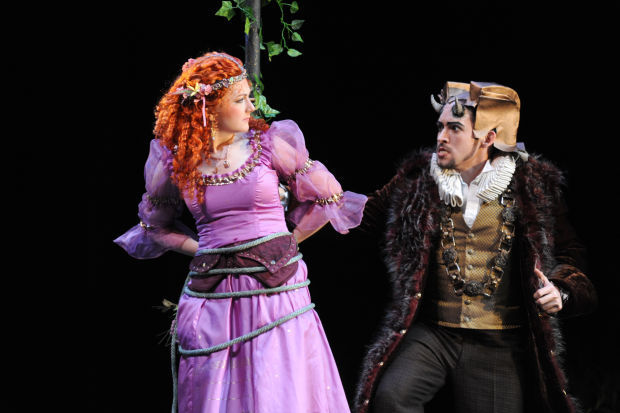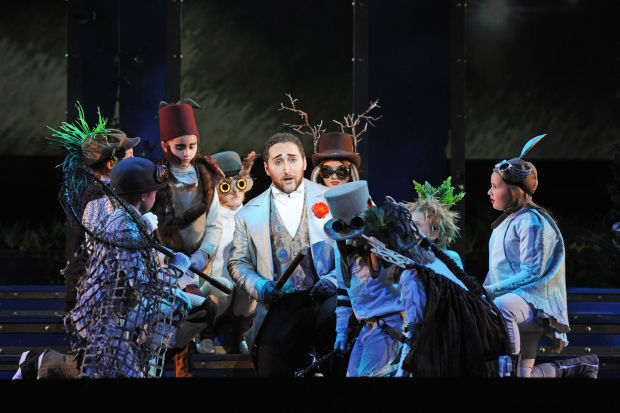Arizona Opera is going Steampunk this weekend.
And it’ll be in good company as it mounts a new production of Mozart’s “The Magic Flute” that borrows from surrealist art and revisionist Victorian-era styles that lean more “A Clockwork Orange” than “Great Expectations.” Across town at Old Tucson, hundreds of Steampunk enthusiasts — most decked out in the requisite retro-futuristic, cyberpunked-out costumes — will gather Friday through Sunday for the Wild Wild West Con 4 Steampunk Convention & Festival, billed as the largest Western-style Steampunk convention in the U.S. (See related story on Page 26.)
“It evolved in an interesting way. There’s a lot of imagination, a lot of fantasy of course because it’s ‘Magic Flute,’ but we have specific references to the fantasy,” said costume designer Leslie Bernstein, whose credits include working in TV on “Law & Order,” “Unforgettable” and, most recently, the new NBC series “The Slap.” “I feel like that’s what
Steampunk is, kind of rivets and bolts and mechanics, industrialization of nature. That’s the idea and the concept and the overarching idea of the show.”
The Steampunk take on “The Magic Flute” is the brainchild of stage director Dan Rigazzi, who staged a prototype for Ash Lawn Opera in Virginia a couple of years ago. Arizona Opera Executive Director Ryan Taylor gave Rigazzi the go-ahead to take the concept further.
Arizona Opera has created the sets and production, which Rigazzi said he believes will eventually be mounted by other companies.
The story of “The Magic Flute” — the prince Tamino, with the help of brightly-feathered bird-catcher Papageno, must rescue the Queen of the Night’s daughter Pamino, held hostage by the evil sorcerer Sarastro — remains unchanged. But the time frame, from Mozart’s late 18th century, has been updated to the late 19th century.
“‘The Magic Flute’ is structured like a classic fairytale,” said Rigazzi, a staff director with the Metropolitan Opera. “Tamino has to go through rites of passage so that he can become a man and become a just and wise king. What we wanted to do was find a concept for the show that supported the fairytale but was sophisticated, because Mozart’s music was quite sophisticated.”
Rigazzi imagined the story being presented in one of two ways — a stripped down fantastical fairy tale, or a dark, Freudian retelling. He found middle ground with his Steampunk twist.
“There’s something about Steampunk that always says ‘Alice in Wonderland,’ which I like. I want to feel like Tamino the Prince goes through the looking glass when he starts his quest,” he said. “In a way it sort of wants to be goofy and absurdist humor, which in my view isn’t far away from the darker aspects of the fairytale. Those things can go together.”
Set designer John Pollard, Bernstein’s husband and occasional collaborator, was inspired by the surrealist art of René Magritte, the 20th century Belgian painter, Rigazzi said. He created a set that borrows from Magritte’s use of frames, which Rigazzi calls portals to somewhere else, somewhere magical.
The stage is “very light, very witty, very simple. The lines are clean,” he said.
As for the costumes, Bernstein mixes leather and lace; Papageno and Papagena are festooned in leafy, feathery patterned outfits, and Papagena’s is accented with a leather zipped corset over her dress.
“It’s sort of that world is applying itself to the natural world,” Bernstein said.





